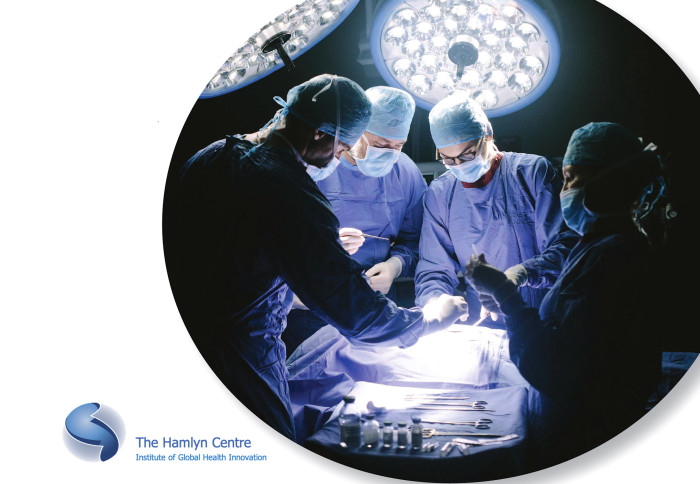Smart Sensing for Surgery

Our Hamlyn researchers outline the recent developments and challenges of smart sensing for surgery, from tethered devices to wearables & implantables.
Recent developments in wearable electronics have fuelled research into new materials, sensors, and microelectronic technologies for the realisation of devices that have increased functionality and performance.
The adoption of sensing systems at a global level is clearly going to be determined by cost, infrastructure requirements, and clinical effectiveness. Dr Panagiotis Kassanos et al.
This is further enhanced by advances in fabrication methods and printing techniques, stimulating research on implantables and the advancement of existing medical devices.
Our researchers at the Hamlyn Centre provide an overview of new designs, embodiments, fabrication methods, instrumentation, and informatics as well as the challenges in developing and deploying such sensing devices and clinical applications that can benefit from them.
The need for and use of these technologies across the perioperative surgical-care pathway are highlighted, along with a vision for the future and how these tools can be adopted by potential end users and health-care systems.
Continuous Monitoring: Sensing Across the Surgical-Care Pathway
Human health is assessed through a wide range of physiological parameters, such as heart rate, blood pressure, temperature or blood components for monitoring markers related to liver, kidney, and heart function.
Different health conditions are characterised by combinations of physiological parameters, many of which are not specific to a particular disorder. Thus, a wide range of parameters must be considered to obtain a holistic understanding of a patient’s health.
Continuous monitoring can reveal patterns in the evolution of these parameters through time and as a function of various conditions that would otherwise be overlooked by typical periodic sampling.

To develop impactful solutions for improving efficiency of continuous monitoring by utilising smart sensing devices, it is important to comprehend the surgical-care pathway, including the pre-, peri- and postoperative phases, and assess the relevant clinical gaps and hurdles associated with each.
Our researchers outline the needs of each phase across the surgical-care pathway and provide examples of sensors that can address different requirements.
Continuous Monitoring: Sensing to Improve Surgical Care
Clinicians routinely use many passive medical devices and instruments that provide simple functions and enable access to the human body and various bio-samples.
Introducing sensing intelligence to these systems without altering their deployment and basic functionality is a means of introducing such devices to health care.
Our research teams provide a series of examples that integrate smart sensors as part of the surgical process, bringing significant improvements into surgical care.

In addition, a list of sensing technologies is summarised with the details of implantation applications, including: (1) Electrical and Physical Sensors; (2) Electrochemical Sensors; (3) Optical Sensors.
Sensing Development: New Materials, Designs, and Embodiments
With regard to new materials, designs, and embodiments, our researchers give an insight of the state-of-the-art sensor development and present several examples of the sensor embodiments and characteristics.

In conclusion, this review article not only summarises the current status of sensor implantation and development, but also brings the attention to the challenges on the road of the incorporation of sensing technologies into routine clinical pathways, as well as provides potential solutions for these issues.
This research was supported by EPSRC Programme Grant "Smart Sensing for Surgery (EP/L014149/1)" and “Micro-robotics for Surgery (EP/P012779/1)” (Panagiotis Kassanos, Melissa Berthelot, Jang Ah Kim, Bruno M.G. Rosa, Florent Seichepine, Salzitsa Anastasova, Mikael H. Sodergren, Daniel Richard Leff, Benny Lo, Ara Darzi and Guang-Zhong Yang, "Smart Sensing for Surgery: From Tethered Devices to Wearables and Implantables", IEEE Systems, Man, and Cybernetics Magazine, 6 (3), July 2020).
Article supporters
Article text (excluding photos or graphics) © Imperial College London.
Photos and graphics subject to third party copyright used with permission or © Imperial College London.
Reporter
Erh-Ya (Asa) Tsui
Enterprise